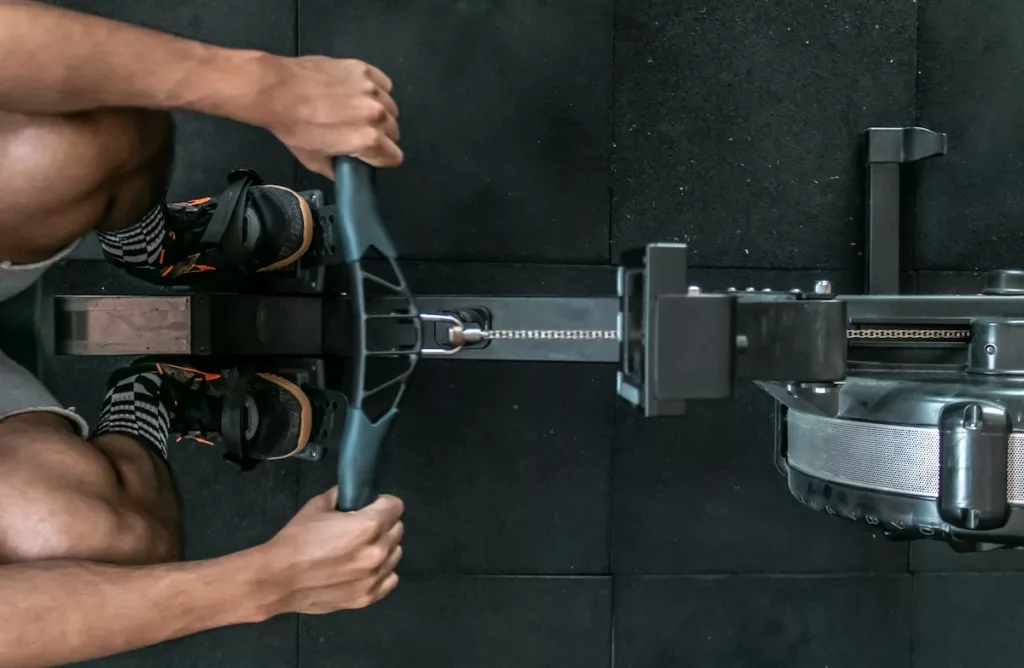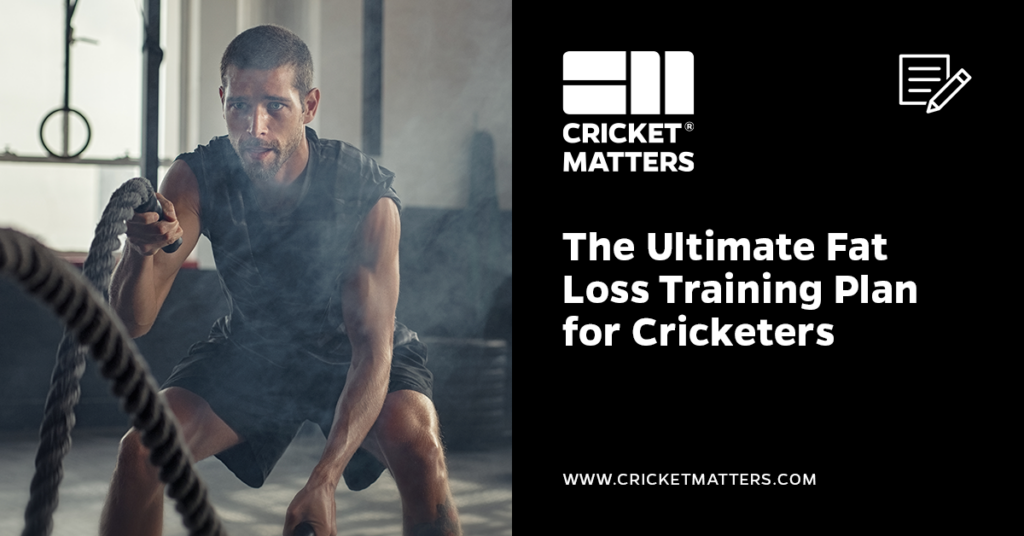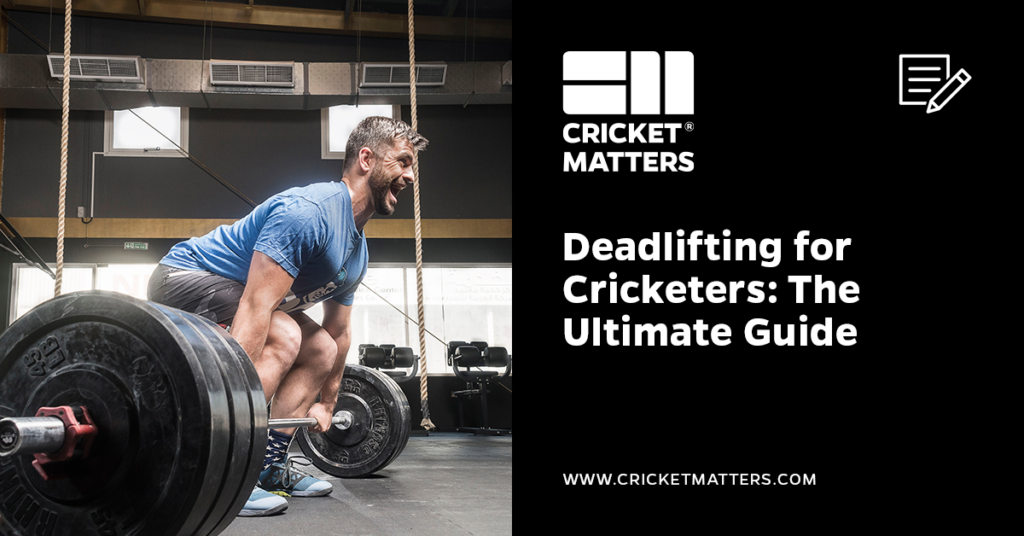![[Case Study] Advanced Hiit Training Plan for Cricketers 3 James Breese: Strength and Conditioning Expert at Cricket Matters](https://www.cricketmatters.com/wp-content/uploads/2024/04/James_Low_Res-150x150.webp)
I hope you enjoy reading this blog post.
James Breese, Cricket Matters FounderIf you need my help with cricket coaching, strength and conditioning, injury rehab, or nutrition, click here.
This case study dives into an advanced HIIT Training plan (High-Intensity Interval Training) designed for cricketers.
This is an advanced hiit training plan for cricketers, but it gives you good insight into our thought process about how to create them for your own workouts to improve your game.
Good luck, and don’t hate us when you give it a go. I assure you, it’s for your own benefit.
Table of Contents
To keep up with the demanding physical requirements of the game, cricketers need to follow a well-rounded strength and conditioning programme that helps them build strength, speed, and stamina.
One such training plan that has gained popularity in recent years is High-Intensity Interval Training (HIIT).
HIIT involves intense bursts of exercise, followed by short periods of rest or recovery.
While HIIT is known to be an effective way to boost cardiovascular fitness, it can be challenging to design a program that caters specifically to the unique needs of cricketers.
In this case study, we will explore an advanced HIIT training plan that is specifically designed for cricketers, with a focus on building strength, agility, and speed.
The Secret to Creating an Advanced HIIT Training Plan

Strength and power is often the focus of modern cricketers who want to hit the ball harder, but we can’t not talk about the importance of cardiovascular health too.
What use is a powerful chassis if you haven’t got the engine to match?
It’s like putting the engine of a Toyota Prius into a Ferrari. To be a true performance car, you need to have a strong powerful heart, as well as being as strong as an ox, and as agile as a cheetah.
When it comes to training the cardiovascular system, we have one golden rule:
If you don’t maximally develop your aerobic energy system first, and have sufficient levels of strength, you will never truly maximize your anaerobic threshold.
From a cardiovascular endurance standpoint, the ability to make use of lactate in the muscles as fuel is one of the most important training adaptations you can make as a cricketing athlete.
This is why having a strong, robust anaerobic system is important to maximizing your cardiovascular potential.
Once you maximize your aerobic threshold, which focuses on reducing the rate at which lactate is produced, and develop sufficient levels of strength, you can then focus on improving the body’s ability to remove lactate by training the anaerobic threshold.
The best way to view your cardiovascular system is to think of it as a vacuum which sucks up all the lactate. The greater the aerobic threshold, the bigger the vacuum.

The bigger the capacity of the vacuum, the more the anaerobic system can contribute to the overall energy production within the body.
The more robust and trained the anaerobic system, the more powerful the vacuum becomes, sucking up lactate at a much faster rate and allowing you to perform faster and for longer.
This is why you can never fully maximize your cardiovascular potential, no matter how high the intensity of the exercise you do, if you don’t fully develop your aerobic threshold FIRST.
Your vacuum simply won’t be big enough to hold all the lactate the body produces.
The key to maximal cardiovascular development is combining both aerobic threshold development and anaerobic threshold development.
This leads me to this case study, John Stevens.
John was already a well-rounded cricketer, and personal trainer himself, but he came to us with specific cricketing performance goals – namely bat longer on a Saturday.
To help him unlock his true potential, we had to play detective to find his weaknesses. Here’s what we found, and how he progressed.
The Case Study: John Stevens
- Name: John Stevens
- Age: 36
- Occupation: Personal Trainer
- Position: Opening Batsman
- 20 Second Row Test Before: 12 Calories x 8 Rounds
- 20 Second Row Test After: 14 Caloires x 10 Rounds
- Time to Achieve: 8 Weeks
Now, I want to put a few things in perspective so you can understand how hard this 20 second row test is.
Next time you’re in the gym near a Concept 2 rower, I want you to set the timer to 20 seconds of work and 2 minutes of rest.
Row as hard as you can for those 20 seconds, record the number of calories you hit, rest a full 2 minutes, and repeat.
Keep repeating until you can no longer hit the same number of calories. Remember your time cap is 2 minutes.
If you get close to 14 calories in the first 20 seconds, great work. But, if you can hit 14 calories 10 times in a row, hats off to you!
Some of you may attempt this and hit a far lower number of calories and find this extremely easy to do.
If that is the case, it means you are not strong enough or aerobically powerful enough to do anaerobic threshold work.
This type of work will want to leave you half dying on the floor, curled up in the fetal position by the end of it.
You’ll be watching your restful 2 minute countdown in fear, not standing around wanting it to hurry up.
On the surface, it may not seem like much, going from 12 to 14 calories, but for someone of John’s ability and experience, this shows huge progress and a significant improvement in his alactic anaerobic endurance ability.
To elicit the correct response from anaerobic training (hiit training), you need to dig deep into your central nervous system.
This only comes with significant pre-requisite strength and aerobic capacity, which we assess in full prior to beginning any training program.
I share these standards so that you have an idea of what John could do prior to training his anaerobic threshold:
Baseline Strength Standards
- 1.5 x bodyweight deadlift x 5 reps
- 1/2 bodyweight kettlebell front squat x 25 reps
- 5 x pull-ups
- 5 x dips
- 75% bodyweight farmers carry – 90 seconds
Cardio Assessment Results
- 1 mile run: 5:31
- 2km row: 6:56

HIIT Training Plan Phase 1: Aerobic Threshold Development
There’s no easy way around this: The key to building your aerobic threshold is volume.
Volume, volume, and more volume of sub-aerobic threshold training allows you to build up your aerobic speed and make your movement economy more efficient in terms of technique and metabolism.
We have to re-train the body to prioritize using fat as the primary fuel source for endurance-based activities such as cricket, and that means spending hours and hours working out below your aerobic threshold.
Having a robust aerobic system is paramount before we dive into developing your anaerobic threshold.
If you want to get really good at HIIT training for cricket, you can’t skip this, you may as well just choose a random HIIT workout from YouTube.
When we talk about volume, the question we always get asked is “How much is enough?”
If you want to build a truly robust aerobic threshold, you need to understand that volume and consistency is key to developing it.
Let’s look at it from an annual perspective: As a novice, you want to build to a minimum of 300 hours of training time each year specifically working the cardiovascular system for cricket, not including strength or movement based workouts.
That’s roughly five to six hours a week dedicated to cardiovascular work. For the more experienced ultra endurance athlete, you’re looking to build to 800+ hours of cardiovascular work each year.
This is what elite men and women do, and it gives you an idea of what it takes to get to that level.
You may be thinking, “I have no chance of hitting 300 hours of training, let alone 800.”
I’m sorry to be the bearer of bad news but this is what it takes to become a serious cricketer.
Your results are directly proportional to the amount of work you put in. Building the cardiovascular engine and developing your aerobic threshold takes time, effort, and dedication but, I promise you, it’s worth it in the long run.
Prior to John starting his eight week program, he spent six months working on strength and aerobic capacity in the off-season with us.
I’ll say that again. This was done in the off-season. Do not attempt this during the season, unless you’re glutton for punishment and have a death wish.
He was training six days a week with one rest day. His training was an even split of strength, mobility work, and running.
John was putting in mile after mile of running, sometimes more than 50 miles a week, alongside his strength work.
His goal was also to train for a marathon, therefore his run volume needed to be thought of accordingly. In phase 1, we focused on volume building and getting his body to adapt to recovering faster.
Our philosophy is quite simple when it comes to running great distances: Get used to running for volume.
Volume building is key.
We accumulated a lot of miles in his legs on back-to-back days preparing for his race.
A sample training week for John during this phase looked like:
- Monday: Strength
- Tuesday: Mobility
- Wednesday: Strength
- Thursday: 12 Mile Run
- Friday: 18 Mile Run
- Saturday: 20 Mile Run
- Sunday: Rest

Phase 2: Alactic Anaerobic Development
The basic principles of anaerobic threshold training are:
- Train intervals to exhaustion
- Rest completely
- Repeat
There is one caveat: All intervals must be identical in nature. This means that what you do should be repeatable until it is not.
It is when these intervals are no longer sustainable that you stop for the day and, in the next session, you progress your workload.
The anaerobic system needs to be fully restored after each interval so that you can train to the same maximum intensity.
Work periods tend to be short, sometimes as little as eight seconds, separated by long recovery times.
If the rest period is too short, the workout will shift to endurance training. The energy system you are training needs to fully recover to elicit the correct response.
As a general rule of thumb, our resting protocols tend to be around 10:1 (rest ten times the amount of work that you put in).
Anaerobic and endurance. Maybe you’re thinking these two words shouldn’t go together. How can anaerobic work, which is unsustainable in nature, be considered endurance?
Well, they do go together. This type of training is hard, very hard, and it hurts.
Improving your anaerobic threshold requires maximum training at the maximum intensity and then extending the time at which you perform it over a longer period.
For example, progressing 10 second sprints for ten sets (identical) to 14 seconds sprints for ten sets (identical).
Unlike aerobic threshold work, anaerobic training requires us to produce as much lactate as possible and to maintain that high level for as long as possible before giving ample rest to allow the body to remove the lactate.
This is how we train the body to get better at removing lactate from the body. It’s exhausting work, and it is why you need years and years of training behind you before even attempting it.
The key to training the anaerobic threshold is less volume, higher intensity, and progression from power to endurance.
There are no shortcuts, and there is no easy way out. With John, when we identified that we needed to enter an anaerobic development phase with him, we began by testing his 20 second row test.
This was performed on a day with no other workouts planned. John achieved 12 calories and this was his starting point for phase 2.
Then two times per week he performed the following workout, after at l east a full 48 hours rest in between:
Sample Workout:
- Train intervals to exhaustion
- Rest completely
- Warmup
- Activation
- Light Strength Session at less than 70% max effort
- Alactic Work: Set the rowing display to 20 seconds work, 2 minutes rest. Ensure calories are clearly displayed on the screen.
- Row as hard as possible and record the total number of calories. Rest 2 minutes. Repeat effort.
Aim to repeat the total number of calories on each working set. Keep adding another set until the final set can no longer match the total calories of the previous sets.
Progressing The Workout
On his third attempt at this workout after two weeks, John hit all ten rounds pulling 12 calories. We then increased the time of the row to 25 seconds, the rest to 2:30, and asked him to repeat the process.
He achieved 15 calories at this intensity, and it took another two weeks before he completed all ten rounds. We then increased the time to 30 seconds of work and three minutes of rest for the final few weeks of this progression which resulted in him pulling 17 calories in 30 seconds.
His first attempt at the 30 second mark only lasted four rounds; it took four more weeks for him to adapt to the full ten rounds.
In total, John performed eight weeks of alactic anaerobic training, which is the upper limit of time we allow for these types of plans.
At the end of the eight weeks we asked John to re-test his 20 second benchmark test, and he pulled 14 calories.
Compared to his original 12 calorie test, this is a significant improvement in his power production and ability to recover from alactic work.
Hiit Training for Cricketers: Lessons You Can Learn From John
When starting an alactic anaerobic training program for cricketers, otherwise known as an advanced HIIT training plan for cricketers, it’s critical to have the pre-requisite strength and cardiovascular capacity beforehand.
If you’re not strong enough or aerobically fit enough, you simply will not reap the benefits from this type of training.
If you don’t have the fundamentals of mobility, flexibility, strength, and aerobic capacity, your body will not be able to stand up to the demands of training for anaerobic capacity (hiit training).
You will likely end up injured and even further away from your goals.
After all the years we’ve spent helping people cricketers, get stronger, and perform better, the one lesson we learned is that it pays to take your time in the beginning and develop your aerobic system first.
Advanced HIIT training plans are relatively simple; the things that set the elite and advanced apart from the rest is that the elite get comfortable with the boredom of this type of work.
It’s a simple progression but it works. For those who have prepared and are brave enough to take on this challenge, I wish you all the best. You’re going to need it.
In terms of how John performed, he went on to averaging over 41 with the bat and hit 5 hundreds that season.
Up from 31 and just the 1 the previous year. It was also the most hundreds he’s ever hit in a calendar season.
Could have been luck, or it could have been the fact he was that much fitter and could bat for longer.
Who knows, but here’s what John had to say about working with us.
John’s Thoughts/Comments
As a personal trainer, I found training myself lacked accountability and consistency. I programmed workouts I enjoyed over ones that pushed me forwards; there’s no progress in comfort.
I had a good base of strength and cardio fitness, but I needed that extra input. In stepped James and the Cricket Matters crew.
For the next six months, my training took a new turn, and I was filling a training calendar with six sessions per week. My strength and aerobic systems improved immensely, and this had a knock-on effect for my running.
My body became robust but the element missing was strength endurance. The Concept 2 rower soon became hugely prevalent in my training as James and the CM posse started experimenting (with my permission) with the next phase: Anaerobic threshold training.
Even with the solid base of strength and fitness installed, these workouts were beyond what I was used to.
Comfort levels had been reached and breached, a sure indicator things were moving forward again. Repeated max effort 20 second rows, multiple times a week became the new norm.
Until then, nothing had ever pushed me to these kinds of limits.
Coping with these workouts was only possible due to having an awesome training buddy in my mate Jason. We always pushed (and pulled) each other through when it got tough, which it really does at this intensity.
Feeling nauseous during and after workouts was, until now, a rarity, but the effect on my running and everyday life was incredible.
Batting for long periods became so much easier and recovery so much quicker, particularly towards the back end of the innings after batting 40+ overs.
I didn’t feel crippled for days like I would do normally. This was by far the fittest, strongest, and most badass I’d ever felt on a cricket field. Best thing I ever did.“
Further Reading
Read This:
FAQs
Does HIIT Work for Cricketers to Increase VO2 Max?
Yes, High-Intensity Interval Training (HIIT) is effective for cricketers in increasing VO2 max. HIIT involves intense exercise bursts followed by recovery periods, enhancing cardiovascular fitness and maximizing oxygen consumption.
Would Cricketers Benefit from HIIT Training?
Cricketers can significantly benefit from HIIT. This training enhances cardiovascular health, improves stamina, agility, and speed, which are vital for cricketing performance.
How Can I Play Cricket Without Getting Tired?
To avoid fatigue while playing cricket, focus on building your stamina and aerobic capacity. Engage in regular fitness training, including HIIT and endurance exercises. Proper nutrition, hydration, and adequate rest are also crucial.
What is Advanced HIIT and How Does It Benefit Cricketers?
Advanced HIIT involves more intense and structured high-intensity workouts with specific goals, such as improving anaerobic threshold and endurance. For cricketers, this can lead to enhanced performance, particularly in terms of batting endurance and fielding agility.
What Does the Advanced HIIT Training Plan for Cricketers Include?
An advanced HIIT training plan for cricketers includes a combination of high-intensity workouts and recovery periods, focusing on both aerobic and anaerobic capacities. It involves exercises like sprinting, rowing, or cycling at maximum effort followed by rest.
How Often Should Cricketers Do HIIT Workouts?
The frequency can vary based on individual fitness levels and cricketing schedules. Generally, incorporating 2-3 HIIT sessions per week, allowing adequate recovery time between sessions, is effective for cricketers.

![[Case Study] Advanced Hiit Training Plan for Cricketers 2 Hiit Training for Cricketers](https://www.cricketmatters.com/wp-content/uploads/2024/04/HIIT_Training.png)

